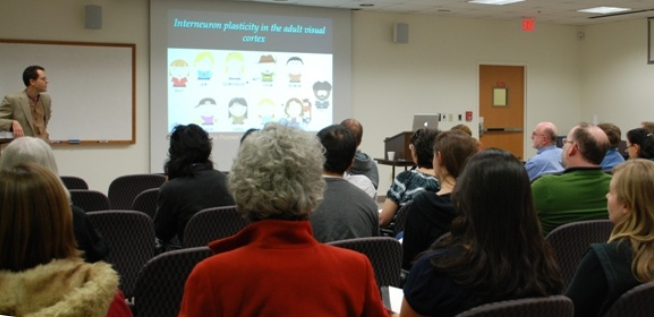Bernard J. Baars, Ph.D.
Krasnow Institute Affiliate
and Former Senior Fellow in Theoretical Neurobiology, The Neurosciences Institute
A global workspace is a hub of binding and propagation in a population of loosely coupled signaling agents. In computational applications, global workspace (GW) architectures combine many distributed agents to help resolve ambiguous or poorly understood problems.
Conscious experiences may reflect a global workspace function in the brain.
In humans the cortico-thalamic (CT) complex underlies reportable conscious percepts, concepts, feelings of knowing, visual images and executive functions. GW dynamics suggests that conscious contents arise from a winner-take-all binding coalition among competing and cooperating signal streams emanating from a specific region of the core. A winning coalition can ignite a ~100 msglobal broadcast to widely distributed receiving networks. Global broadcasts are proposed to be embedded in goal-driven, unconscious, serial cognitive cycles, lasting ~600 ms, and engaging a frontal-basal-ganglia- thalamocortical loop. While sensory experiences are proposed to bind and broadcast from posterior cortex, “fringe conscious” feelings of knowing (FOKs) are proposed to emerge from non-sensory cortex and linked thalamic nuclei.
The theory yields new, testable predictions.
http://www.youtube.com/watch?v=Cjst9Zv-7zY
Bernard Baars: How Consciousness Functions – Thinking Allowed DVD w/ Dr. Jeffrey Mishlove
Uploaded by ThinkingAllowedTV on Aug 20, 2010
NOTE: This is an excerpt from the full 90-minute …









 Additional questions and feedback on the Neuroscience Portal site can be addressed to:
Additional questions and feedback on the Neuroscience Portal site can be addressed to: